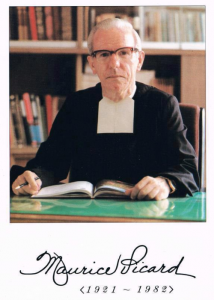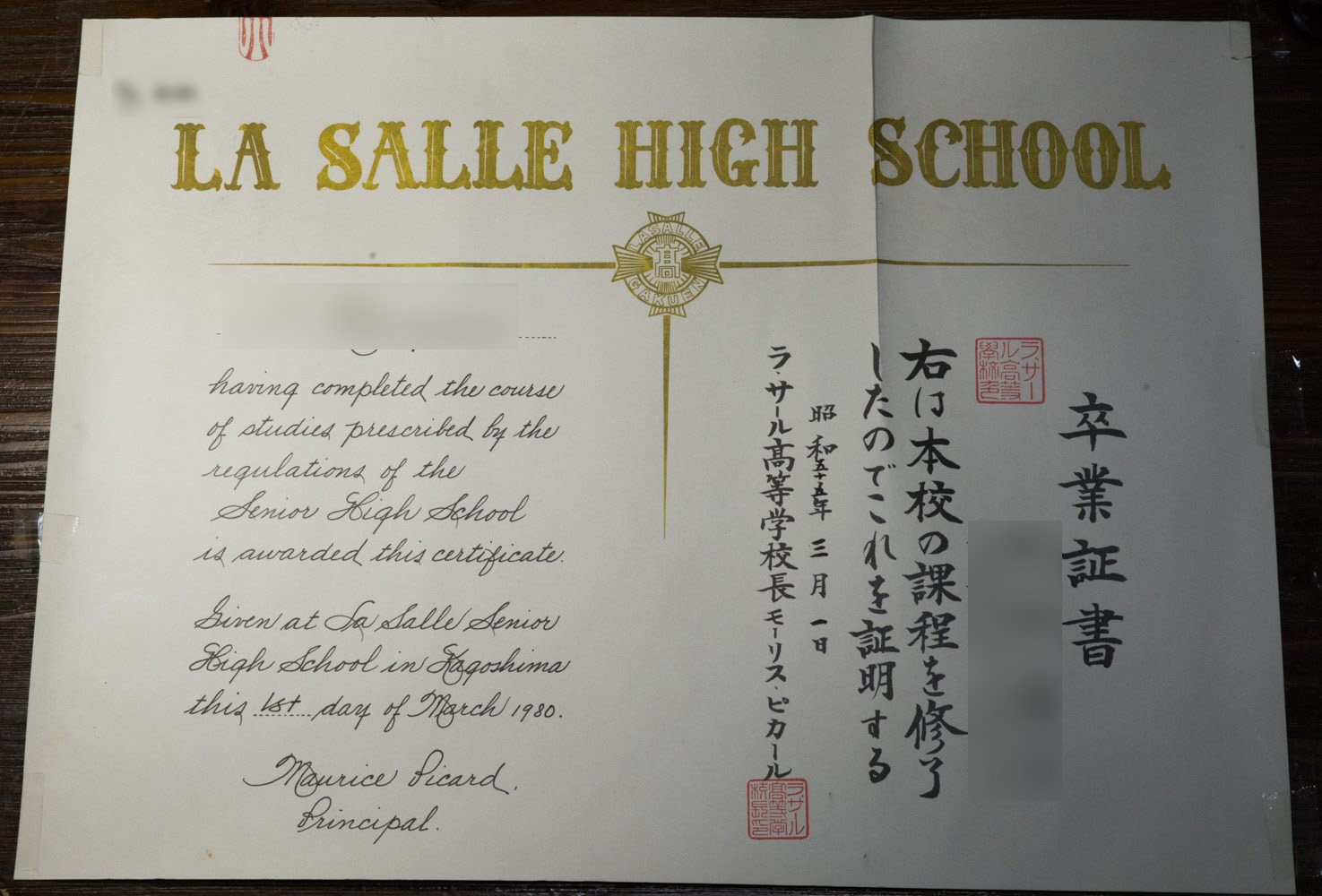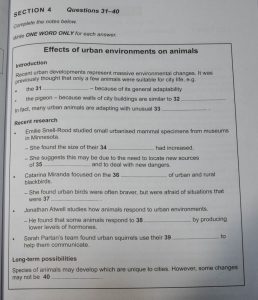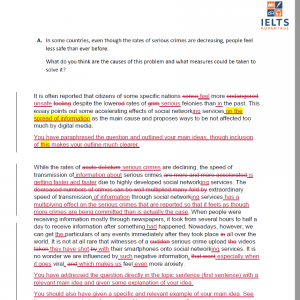 IELTSのライティング添削、三回目。今回は最初の段落の書き方についてはOKになりましたが、論じ方が弱いというご講評。スコアは全ての項目でバンド6。正直今の私の英語力ではこれ以上のレベルを取るのはかなり難しいです。
IELTSのライティング添削、三回目。今回は最初の段落の書き方についてはOKになりましたが、論じ方が弱いというご講評。スコアは全ての項目でバンド6。正直今の私の英語力ではこれ以上のレベルを取るのはかなり難しいです。
また、パラフレーズするために難しい単語を使ったら、その単語の使い方が正しくないと逆効果だ、というコメントでした。なかなか先は長いです。
カテゴリー: English
IELTSのライティング添削2回目
 IELTSのライティングの添削の2回目。今回はバンド5.5とまた先日のテスト結果と同じレベルに戻ってしまいました。それで添削を読んで分かったのは、問題文のどこにも書いていない「暗黙の要求事項」が沢山あるということ。それから、私が受けているのはGeneralですが、受験者の8割以上がAcademicであって、ライティングで期待されるのはAcademicで(汎用的なAcademicではなく、イギリスの大学で要求されるAcademicで)受け入れられる書き方だということです。
IELTSのライティングの添削の2回目。今回はバンド5.5とまた先日のテスト結果と同じレベルに戻ってしまいました。それで添削を読んで分かったのは、問題文のどこにも書いていない「暗黙の要求事項」が沢山あるということ。それから、私が受けているのはGeneralですが、受験者の8割以上がAcademicであって、ライティングで期待されるのはAcademicで(汎用的なAcademicではなく、イギリスの大学で要求されるAcademicで)受け入れられる書き方だということです。
ライティングの2番目のエッセイ(この名前が勘違いの元で、短論文です)については、問題は3パターンあって、 (1)ディスカッション(ある人は…と主張し、別の人はそれは正しくないと主張しています。あなたはどちらの考えかを書きなさい、という問題)(2)アーギュメント(ある意見に対して賛成か反対かを述べる問題)(3)2つの質問に答えるもの(ある事象の原因は何か、それを解決するにはどうしたらいいか、のように2つの問いに答えるもの)
です。
それぞれに、ほとんど採点者が期待する書き方のパターンがあって、それから外れた解答ではたとえ文法ミスが少なく高度な語彙を使えていても高い点は取れないということです。
具体的に言うと、今回の問題は(1)のディスカッションでしたが、それに期待される解答パターンは、
第1段落
2つの意見を自分の語彙でパラフレーズ(言い換え)して問題を再確認する。(問題文と同じ単語を使わないこと。)
そして今回のエッセイはどちらの立場でどのような意見を述べるのかを書く。
第2段落
まずは片側の立場(最終的に反対する立場)について、その立場が拠って立つ論拠を確認し、それに対し批判を加える。
第3段落
もう一つの立場(賛成する方の立場)について、それを弁護する意見を展開する。その意見の後に具体例を付け加えて論証の補強とする。
第4段落
片側の立場に反対し、別の立場をこういう理由で支持するということを結論として書く。
問題なのは、この試験は本来の意味の英語のライティングとしては、かなり特殊だということです。はっきり言ってビジネスの世界でこのような文章を書くことは、法律事務所とかだったら分かりませんが、一般的にほとんどないでしょうし、またアメリカではこういうスタイルのもって回った論述よりまず結論を出し、具体例を最初から出していく方が好まれ、このスタイルが汎用性があるとは言えないことです。つまり、これはエリン・メイヤーがCultural Mapで述べている欧州の人が好きな原理原則から演繹していくのに近いスタイルです。
IELTSのライティングの添削
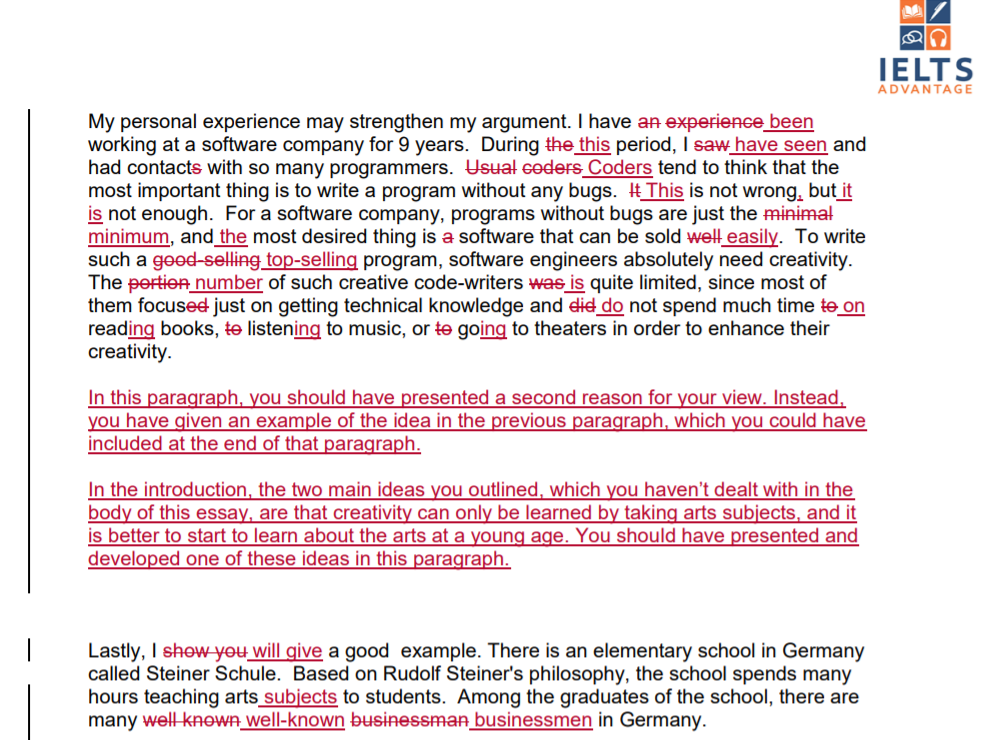 IELTSのライティングの試験(結果5.5)で思い知ったこと。AEONでのライティングコースは、英語を書く機会を作るという意味では有用でしたが、AEONの先生(ネイティブ)による添削の内容ははっきり言ってIELTSのライティングで要求されるようなレベルのものではまるでなかったということです。AEONは7月末で止めますので、ライティングの添削サービスをインターネット上で探して、ILETS Advantageというサービスの添削を取り敢えず5回受けてみることにしました。$115です。1回辺り約2,500円ということになります。AEONのは20回の添削で3万円ちょっとでしたから、1回1,600円くらいです。
IELTSのライティングの試験(結果5.5)で思い知ったこと。AEONでのライティングコースは、英語を書く機会を作るという意味では有用でしたが、AEONの先生(ネイティブ)による添削の内容ははっきり言ってIELTSのライティングで要求されるようなレベルのものではまるでなかったということです。AEONは7月末で止めますので、ライティングの添削サービスをインターネット上で探して、ILETS Advantageというサービスの添削を取り敢えず5回受けてみることにしました。$115です。1回辺り約2,500円ということになります。AEONのは20回の添削で3万円ちょっとでしたから、1回1,600円くらいです。
昨晩第1回目の課題を提出して、添削されたものがほぼ24時間で返って来ました。AEONのしょうもない添削と違って(言ってみればAEONのは小中学レベル、このサービスは高校・大学レベルです)、真っ赤っかですがとても有用な添削です。というか、英語の問題よりも、日本人が学校でほとんど訓練を受けていないロジカルなライティングの組み立てが問題なんだ、ということが良く分かりました。評価は、
Task Response (課題への対応の適切さ)6
Coherence and cohesion (主題との関連性、まとまり)5
Vocabulary (語彙)6
Grammer (文法)7
Overall (全体)6
でした。この間の本番が5.5だったからそれよりはいいですが、どこで減点されるかが良く分かりました。とにかく、問われていることをストレートに議論しないといけないということで、ちょっとひねった新聞のコラムみたいなスタイルは駄目ということです。次回からはその辺りは改善出来ると思います。
IELTSの第一回目受験の結果…爆死…
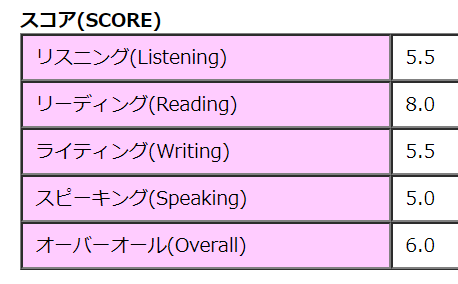 IELTSのGeneral、初受験の結果が出ました。受験から13日目の午後に結果が出るというのは手書きのテストにしてはなかなかスピーディーです。
IELTSのGeneral、初受験の結果が出ました。受験から13日目の午後に結果が出るというのは手書きのテストにしてはなかなかスピーディーです。
結果はかなり残念でした。まあ、IELTSは1回で望みの結果が出ることはまずないそうなので、次に9月末に再トライします。
ただ、リーディングが8.0というのは予想外でした。大体、リーディングの冒頭でトイレに行って3分くらいロスしているのに、これが一番いいというのは不思議です。ちなみにネイティブでもレベル9を取る人はほとんどいないということで、英語の教師でやっと8.5くらい。普通のネイティブは8ぐらいみたいらしいので、リーディングに関してはネイティブ並みに達したということになります。まあ、リーディングの問題は英語のテストというより国語のテストという感じで、国語のテストに関しては高校時代から一番得意な分野なので、その能力が出た、ということだと思います。
また、ライティングは結構自信があったのですが、実はIELTSの中ではライティングが一番タフみたいです。(リスニングは集中力が切れて出来が悪かったのは自覚していたのでまあこんなものだと思います。)以下のページに、留学してMBAを卒業した人でも5.5だったという記事があります。多分英語だけの問題ではなく、内容的にも大学のレポートで優を取れるような内容を書かないと高い評価は出ないのだと思います。(そういう意味ではAEONの教師の添削はほぼ無意味です。)
https://ielts.xsightplus.com/2017/01/09/writing70/
スピーキングに関しては、rubbishが分からなかったり、ある単語が思い出せなくて口ごもったり、お題に関するスピーキングであまりに早く終わりすぎたり、と色々と減点ポイントがあったので、まあ次回以降に期待です。
Favorite teacher
The following essay is what I wrote as an writing assignment for an English school AEON:
Topic: Favorite teacher
Style: Casual
I still remember the principal of my high school well. His name was Maurice Picard, and he was also called Brother Horace. He was both the third and sixth principal of St. La Salle High School in Kagoshima. His tenure as the sixth principal was from 1975 to 1982. I was in the school from 1977 to 1980. Very sadly, he died in 1982 from cancer at just 61.
He was a Canadian, and was silent, gentle, and decent. His belief of God was true and firm. When an important ceremony was going to be done at the school, he always said to us that he would pray for good weather to God, and it was always realized! We called it a miracle of Brother Horace.
Since he was the principal of the school, he just took part in the lesson of “Bible History”. It was not at all a forced religious lesson, but he just tried to give us some basic knowledge of the bible. When he checked the attendance of the students at the beginning of the lesson, he called the names of the students including both first and family names with 100% accuracy. Some given names are difficult to read even for us Japanese, but he was memorizing all names of 1,200 students both at the junior high school and the high school. In the lesson, he taught us many Christmas carols that I still remember well. (One funny thing was that he pronounced “Hark the herald” as “Ark the (ði) Erald” because he was from Quebec in Canada where people speak French).
My passed mother was shy and she scarcely opened up with someone whom she met for the first time. But when she first met Brother Horace, she soon came out of her shell and became a big fan of Brother Horace.
I put a photo of my certificate of graduation from the high school in this document. You can see in the left some English descriptions. Brother Horace wrote them for all 250 graduates’ certificates by himself (they are not printed). It proves his sincerity. Now there is a relief of him placed in the high school campus. We (all La Salle boys) strongly believe that he died earlier because he was so much loved by God.
IELTS (General)初受験(2019年5月11日、会場:JP500{横浜})
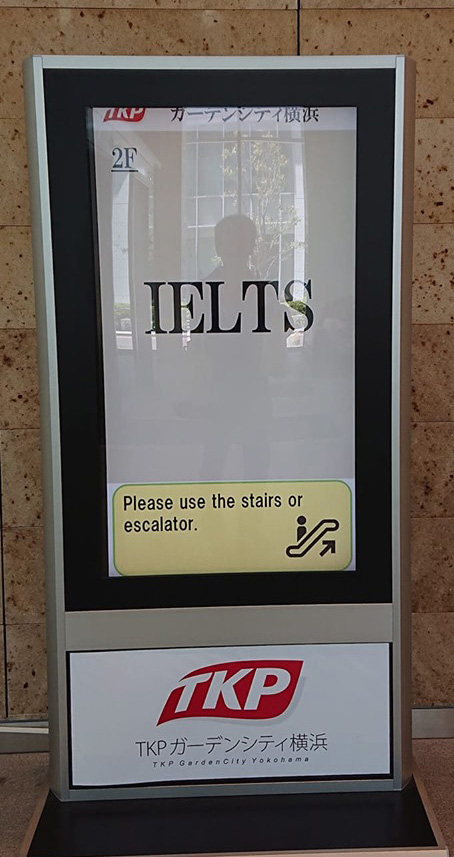 IELTS(General)を初めて受験しました。ちなみにIELTSには留学の資格が目的のAcademicと一般向け・就労向けのGeneralの2種類があります。私は留学の予定は無いのでGeneralにしました。しかし、これまで入手した2冊の参考書がどちらもAcademic向けであり、私が検索した限りでは、日本ではGeneral向けの参考書は出ていないようです。この2つでスピーキングとリスニングは共通であり、リーディングとライティングが問題が違います。ともかく、参考書の状況から見て、日本でGeneralを受験する人は非常に少ないようです。
IELTS(General)を初めて受験しました。ちなみにIELTSには留学の資格が目的のAcademicと一般向け・就労向けのGeneralの2種類があります。私は留学の予定は無いのでGeneralにしました。しかし、これまで入手した2冊の参考書がどちらもAcademic向けであり、私が検索した限りでは、日本ではGeneral向けの参考書は出ていないようです。この2つでスピーキングとリスニングは共通であり、リーディングとライティングが問題が違います。ともかく、参考書の状況から見て、日本でGeneralを受験する人は非常に少ないようです。
そして受験してみての感想ですが、
(1)ともかく手際があまり良くない。
受付開始は午前8:00なんですが、結局最初のライティングが始まったのが9:25ぐらい。余裕を見て7:30頃には既に会場に着いていましたが、そこから試験を受けるまで2時間近くかかっています。手際が良くない最大の理由は、セキュリティが信じられないくらい厳重だからです。まず会場に持ち込めるのは、数本の鉛筆でキャップ無しのもの(シャープペン不可)、消しゴムのカバーを取ったもの、及びパスポート(カバー無し)と、ラベルを剥がしたPETボトルの水、これだけです。後は全て荷物置き場に預ける必要があります。スマホ・携帯はもちろんダメ、時計もダメ、ポケットの中も財布も含めてすべて出して空にしないといけません。ハンカチやティッシュも駄目です。ティッシュは会場で3枚ずつ配られました。更に会場で写真を撮るのと同時に、右手の人差し指の指紋まで取られます。なんでたかが英語のテストでここまで厳格にやらないといけなんでしょうか。イギリスがBrexitになって、移民を押さえ込もうとしている姿勢の表れかと勘ぐりたくなります。また、過去にTOEICで不正受験があって、TOEICがイギリスへの留学・就労資格として認められなくなったと聞きましたが、そういうのの影響もあるようです。
こういう状態なんで、一回会場に入って念のためトイレに行ったら「もう一度エントリーの手続きをやり直してください」と言われました。結局係員の人が大目に見てくれましたが何だかなあ、です。
こういう厳重なセキュリティーのせいか、係員がやたらと多いです。
(2)トイレが大変
午前中のテストは、ライティング-リーディング-リスニングの順番で、この途中でトイレ休憩などは一切ありません。私は会場に入ったのは8:30頃で、リスニングが終わったら12:30でほぼ4時間トイレに行けません。私は思いきってリーディングの最初で手を上げてトイレに行きました。係員がトイレまで付いてきました。これで3分ぐらいロスしました。
(3)ライティング
ライティングの問題は、150ワードと250ワードの2つのエッセイを書く必要があります。
今回は、最初のエッセイが「子供の学校が外国に(修学)旅行に行くことになり、同行する保護者を募集している。
①まず募集に申し込む。②その理由を書く。③その他の質問をする。」という内容の手紙を担任の先生に書くというものでした。特に問題無く、165語くらいの手紙を15分もかからないで書けました。
2番目の問題は、「新しい技術は労働者にとってメリットがあるか、デメリットが多いか、あなたの意見を述べよ」というものです。これも以前「実践ビジネス英語」でトピックとして扱われたことがあり、賛成派と反対派の意見を併記して、最後に自分の意見を書いてまとめ、265語くらいになりました。
という訳でライティングは順調でした。これまでAEONのライティングコースで平均400ワードのエッセイを61回書きましたから、さすがに慣れています。
(4)リーディング
これもあまり大きな問題はなく、トイレに行って時間を消費しましたが、無事に時間内に終えることが出来ました。最後のパートが一番骨で2ページに渡る長い文章を読んで解答する必要があります。今回は「胡椒」に関するエッセイであり、胡椒が昔は黄金並みの価値があったとか、緑と黒と白の胡椒の違いとかの話です。「黒胡椒について次の5つの選択肢から当てはまるものを3つ選べ」という問題がかなり大変で、2つは簡単に解答出来ましたが、残り1つがちょっと自信が無いです。ただ全体的にはまあ順調でした。
(5)リスニング
これが最大の難関でした。大体ライティングとリーディングで既に2時間経っており、ここから更に集中力を維持するのが至難の業です。しかも集中して聞かないとある箇所を聞き逃すと1問答えられなくなります。
前半は問題無かったですが、最後の2つのパートがかなり面倒でした。特に最後のは、経済学で知らない人に対して好意を持つことがどのような経済的なメリットになるか、という話で、ちょっとしたゲーム理論ぽい話も出てきてかなりタフでした。TOEICだったら単に選択肢の中から選ぶだけですが、IELTSでは数字や単語をそのまま書かされる問題が多く、その部分を聞き逃すとアウトです。しかも選択する問題でも、その選択肢にある話がすべて出てきて、ほんのちょっとした表現で結局どれが一番適当なのかを判断しないといけません。
今年の1月にTOEICのリスニングで満点取れましたが、このIELTSのリスニングは良くて7割くらいしか正解出来ていないと思います。
また、私の思い込みかもしれませんが、イギリス英語ということでクィーンズイングリッシュみたいなのを期待していたら、結構なまったような発音が出てきて面食らいます。調べてみたら非ネイティブのなまった英語もかなり問題として採用しているようです。
(5)スピーキング
先生は、男性のネイティブでした。未確認情報ですが、日本人の判定員の場合も若干ですがあるようです。
話題は自己紹介、子供の頃好きだった遊び、ゴミを道に捨てる人をどう思うか、人にアドバイスした実例で、「誰に」「何のアドバイスをして」「その効果はどうだったか」というスピーチが1~2分。これについては早口でしゃべったら時間が余って、後から付け足しを入れたりしました。更に両親が子供にアドバイすすることをどう思うか、という質問があり、更に良くない友人と付き合うな、というアドバイスはどうか、などの追加質問がありました。更には専門家のアドバイスはどうあるべきか、例えば医者が患者にアドバイスする時は、という質問もありました。
一部単語の意味が分からなくて聴き返したり、上記のように時間が余って沈黙の時間があったりで出来はあまり良くはありませんでしたが、言いたいことはしゃべった積もりです。医者の所の話で、例の”hippocratic oath”に従うべきだ、と言えたので、語彙力は少なくとも示すことは出来たと思います。
ちなみに、上記の「ゴミを捨てる」話で、最初”rubbish”と言われて、正直に分からなかったので意味を聞きました。これ典型的なイギリス英語で、アメリカならgarbageやtrashという所です。IELTSは建前はアメリカ英語もOKとしていますが、実際はバリバリのイギリス英語でテストされるということだと思います。
ちなみに受験者はほとんど学生か20代くらいの人で、一部セーラー服の女子高生も数人見かけました。男女比は1:2くらいで圧倒的に女性の方が多いです。会場は横浜(ちなみに毎年人間ドックを受けているクリニックと同じビルだったのでまったく迷わずに到着出来ました)ですが、人数は160~180名くらいだと思います。席は一番後ろから2番目でしたが、リスニングは会場内にある複数のスピーカーで音声が流されたので、TOEICみたいに後ろの席が不利ということはなかったです。
結果の発表は3週間後で郵送されます。まあ、私の場合IELTSでどのレベルを確実に取得しなければならないという具体的な目標は無いので結果は謙虚に受け取り今後の学習計画の参考にする積もりです。
老婆心からの注意事項:
(1)今回会場の空調の設定が22℃になっていました。こっそり24℃に変更しましたが、それでも結構寒かったです。あまり薄着をしていくと大変ですし、(2)のトイレにも効いてきます。
(2)トイレが近い人は何らかの対策を考える必要があります。私もちょっとこれを軽視していました。
(3)鉛筆は最低5本、出来れば6本くらいあった方がいいです。ライティングは3ページぐらい書くことになるので、ここでまず2本ぐらい消費します。会場で係員が携帯鉛筆削りを持っていましたが、十分な数がある訳ではありません。
(4)受付時間スタートの時間に合わせて行くと、受付としては早くなりますが、待ち時間が長くなります。早く行くのもほどほどに。
(5)試験の進め方、注意事項などの説明はすべて英語です。日本人以外の受験者もいるため、そうなるようです。そういうのを聴き取れる自信がないレベルの人はそもそもこのテストを受けるべきじゃないと思います。
IELTS リスニング模試
IELTS(General)を準備中
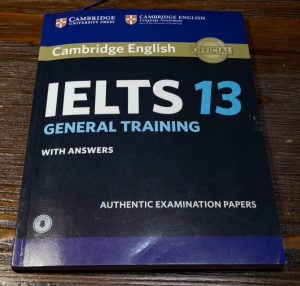 IELTSの”General”を5月11日に受験するので、その対策のお勉強中です。IELTSには留学を目的とする人向けの”Academic”と、私が受験する就労目的の”General”があります。既にIELTSの参考書を2冊買ってあったのですが、参ったのはどちらも”Academic”用だったということです。この2つでは、リスニングとスピーキングは共通ですが、リーディングとライティングが内容が違います。それで、”General”に対応した参考書をAmazonで探しましたが、残念ながら日本語解説付きのものは見当たりませんでした。唯一の例外が写真の公式問題集(すべて英語)で、これはちゃんとAcademic用とGeneral用が別々に売られています。価格は5,000円前後で、そんなに厚い本じゃないのにかなり高いですが、他に選択肢がありません。
IELTSの”General”を5月11日に受験するので、その対策のお勉強中です。IELTSには留学を目的とする人向けの”Academic”と、私が受験する就労目的の”General”があります。既にIELTSの参考書を2冊買ってあったのですが、参ったのはどちらも”Academic”用だったということです。この2つでは、リスニングとスピーキングは共通ですが、リーディングとライティングが内容が違います。それで、”General”に対応した参考書をAmazonで探しましたが、残念ながら日本語解説付きのものは見当たりませんでした。唯一の例外が写真の公式問題集(すべて英語)で、これはちゃんとAcademic用とGeneral用が別々に売られています。価格は5,000円前後で、そんなに厚い本じゃないのにかなり高いですが、他に選択肢がありません。
取り敢えず試験の形式に慣れるために模試をやっていて、ライティングとリーディングをやりました。ライティングは制限時間60分で、150ワード以上と250ワードの2つのエッセイを書かされます。AEONのライティングコースでこれまで300~400ワードのエッセイを61回書きましたので、さすがにこれは大きな問題はなく、時間内に175ワードと284ワードのエッセイを完成出来ました。採点はしようがないようでやりません。リーディングも60分で3つの文章を読まされます。かなり実用系の文書です。TOEICのように文法の質問とかは一切なく、ひたすら内容についての質問で、それぞれの段落のタイトルとしてはどれがふさわしいかを選択肢から選んだり、文章の内容を要約して文の穴埋めとかそんなので、かなりの部分英語の問題というより国語の問題で、それはまあ得意なので大きな問題はないかなと思います。単語はさすがにTOEICより難しくていくつか知らない単語がありましたが、それで解答に困るという程ではありません。
漱石と牡蠣
夏目漱石が「吾輩は猫である」の中で、主人公の猫が飼い主の苦沙弥先生のことを「牡蠣的主人」(寡黙であまり出歩かないという意味で)と呼んでいますね。ご承知の通り漱石は1900年5月から1902年12月までロンドンに留学しています。その当時は「牡蠣=寡黙、非社交的」のイメージは英語の中で確固としてあったのでしょうね。
==================================================================
彼は性の悪い牡蠣のごとく書斎に吸い付いて、かつて外界に向って口を開いた事がない。
人間もこのくらい偏屈になれば申し分はない。そんなら早くから外出でもすればよいのにそれほどの勇気も無い。いよいよ牡蠣の根性をあらわしている。
主人のようなしなびかけた人間を求めて、わざわざこんな話しをしに来るのからして合点が行かぬが、あの牡蠣的主人がそんな談話を聞いて時々相槌を打つのはなお面白い。
そんな浮気な男が何故牡蠣的生涯を送っているかと云うのは吾輩猫などには到底分らない。
小説中の人間の名前をつけるに一日巴理を探険しなくてはならぬようでは随分手数のかかる話だ。贅沢もこのくらい出来れば結構なものだが吾輩のように牡蠣的主人を持つ身の上ではとてもそんな気は出ない。
「はあ賛成員にならん事もありませんが、どんな義務があるのですか」と牡蠣先生は掛念の体に見える。
“An oyster of a man”の出典
「新々英文解釈研究」の最初の方に出てくる、”He is an oyster of a man.”の出典と思われるものを突き止めました。(OEDでのoysterやclamで「寡黙な人、非社交的な人」という意味の用例がマーク・トウェインが多かったので、最初マーク・トウェインの何かの作品かと思って、マーク・トウェイン作品のテキストが検索出来るページで調べましたが見つかりませんでした。)John Dunlopというスコットランドの詩人(1755 ー 1820)の書いた歌詞の中に”an oyster of a man”が出てきます。しかし、これは1812年の「ジョージ・マッカルがグラスゴーの『牡蠣クラブ』から引退するにあたって」という歌であり、かなり特殊な文脈で使われていることが確認出来ます。しかもおそらく、ジョージ・マッカルという人は何らかの理由で、「牡蠣クラブ」から引退(または退職)するのであり、そこで「牡蠣のような人」というのは「牡蠣クラブを象徴するような人(または常連客、あるいは従業員)」という意味でほとんどジョーク的に使っていると考えられ、「寡黙な人」という意味ではないように思います。歌詞の中に「白鳥のように自分自身のレクイエムを歌う」とありますから、ますます無口であるという解釈はおかしいです。それに「牡蠣クラブ」はおそらく美味しい牡蠣を食べながら社交を楽しむ人の会かあるいはオイスター・バーの名前ではないかと推察されます(現在でも同名のオイスター・バーが各地にあります)ので、まったくもって「寡黙な人」はおかしいと思います。ちなみに、歌詞の中の”Tiny Lochrians ! huge Pandores !”はどちらも牡蠣の品種だと思います。(前者はOEDに載っていませんが多分「Ryan湖(Loch Ryan、塩水湖)の牡蠣」ということだと思います。18世紀の始めから牡蠣の養殖場で有名のようです。後者は”A kind of large oyster found in the River Forth, esp. near Prestonpans.”とあります。)ジョージ・マッカルは、そういう色んな牡蠣に愛される人間だけど牡蠣みたいな人、って言っているんでしょうね。調べてみたらスコットランドのグラスゴーは今でも牡蠣で有名で色んなオイスター・バーやレストランがあり、そういう町で「牡蠣のような人」というのがネガティブな意味では決してないと思います。
John Dunlop (writer)
https://en.wikipedia.org/wiki/John_Dunlop_(writer)
“Dunlop of that ilk : memorabilia of the families of Dunlop … ; with the whole of the Songs ; and a large selection from the poems of John Dunlop”
ON GEORGE M’CALL RETIRING FROM THE “OYSTER
CLUB” IN GLASGOW (1812).
[His letter of demission ended with four verses wretched poetical lines.]
The Oyster Club, in sable clad,
Laments for George M’Call,
Who, swan-like, his own requiem sings.
Weep ! Weep ! ! ye oysters all.
Tiny Lochrians ! huge Pandores !
Forget him, if you can ;
He was, creation must confess,
An oyster of a man ! !
拙試訳
牡蠣クラブ、喪服を着て
ジョージ・マッカル氏を悼む
氏は、白鳥のように、自分自身のレクイエムを歌う
ああ悲しい、悲しい、牡蠣のみんなよ
小さなリャン湖の牡蠣、大きなパンドレス牡蠣よ
もし可能なら彼を忘れよう
氏は、創造主は告白しなければならないが、
まさに人間牡蠣だった。

